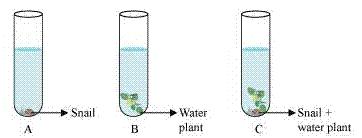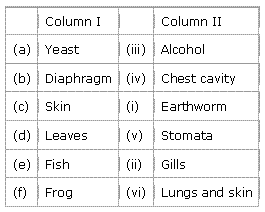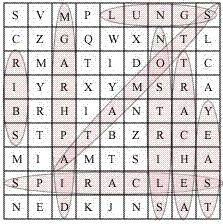Class 7 NCERT Solutions Science Chapter 6 - Respiration in Organisms
Respiration in Organisms Exercise 67
Solution 1
During race an athlete needs more energy. To release energy, muscles need more oxygen. So to take more amount of oxygen an athlete breathes faster and deeper.
Concept insight: Energy is released by breaking down glucose in the presence of oxygen. It is called respiration.
Solution 2
Similarity between aerobic and anaerobic respiration:
In both aerobic and anaerobic respiration, the food is broken down to release energy.
Differences between aerobic and anaerobic respiration:
|
Aerobic respiration |
Anaerobic respiration |
|
i. It is the process of breakdown of food in the presence of oxygen. |
i. It is the process of breakdown of food in the absence of oxygen. |
|
ii. Its end products are CO2 and H2O. |
ii. End products of anaerobic respiration can be lactic acid (muscles) or CO2 and alcohol. |
|
iii. It takes longer time to release energy.
|
iii. It is a fast process as compared to aerobic respiration. |
|
iv. It produces large amount of energy.
|
iv. It produces less amount of energy as compared to aerobic respiration. |
|
Examples: It occurs in most plants and animals. |
Examples: Yeast, bacteria, human muscle cells, etc. respire anaerobically. |
Concept insight: Modes of respiration - aerobic and anaerobic.
Solution 3
When we inhale lots of dust-laden air, dust particles cause irritation in the upper nasal passage. So to expel them out we reflexively sneeze.
Concept insight: By sneezing body expels out the unwanted particles which enters in our nasal passage.
Solution 4
Test tube A will have the highest concentration of CO2. This is because test tube A contains snail. Snail is an organism that breathes in O2 and breathes out CO2, Hence, CO2 concentration increases in test tube A.
Test tube B contains a water plant, which takes in CO2 for food synthesis and gives out O2. Hence, more O2 concentration is found in test tube B.
Test tube C contains both a snail and a plant, The CO2 produced by the snail is utilized by the plant for its food synthesis and the O2 released by the plant is utilized by the snail for respiration.
Therefore, test tube A has the highest concentration of CO2.
Concept insight: CO2 is evolved during respiration as a by product along with energy and water.
Solution 5
(a) In cockroaches, air enters the body through
(iii) spiracles
Concept insight: All insects breathe through spiracles.
(b) During heavy exercise, we get cramps in the legs due to the accumulation of
(ii) lactic acid
Concept insight: Anaerobic respiration in muscles.
(c) Normal range of breathing rate per minute in an average adult person at rest is
(ii) 15-18
Concept insight: Recall the concept of breathing.
(d) During exhalation, the ribs
(ii) move downwards
Concept insight: Recall mechanism of breathing.
Solution 6
Concept insight: Breathing and respiration in other animals.
Respiration in Organisms Exercise 68
Solution 7
(i) During heavy exercise the breathing rate of a person slows down. (F)
Concept insight: During exercise oxygen requirement of person increases so breathing rate increases.
(ii) Plants carry out photosynthesis only during the day and respiration only at night. (F)
Concept insight: Plants do respiration in day and night.
(iii) Frogs breathe through their skins as well as their lungs. (T)
Concept insight: Frogs breathe on land through skin and lungs and in water through skin.
(iv) The fishes have lungs for respiration. (F)
Concept insight: Fishes respire through gills.
(v) The size of the chest cavity increases during inhalation. (T)
Concept insight: Size of chest cavity increases during inhalation so that volume of lungs can increase.
Solution 8
(i) Trachea
(ii) Ribs
(iii) Diaphragm
(iv) Stomata
(v) Spiracles
(vi) Lungs
(vii) Nostrils
(viii) Yeast
(ix) Cockroach
Solution 9
The mountaineers carry oxygen with them because:
(b) The amount of air available to a person is less than that available on the
ground.
Concept insight: Recall the concept of breathing.




